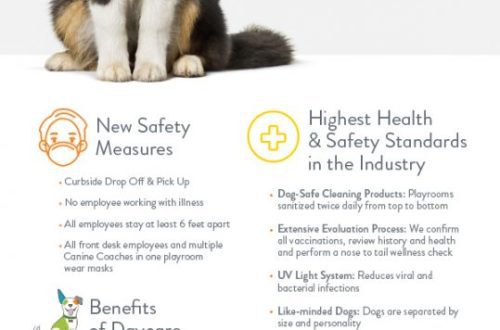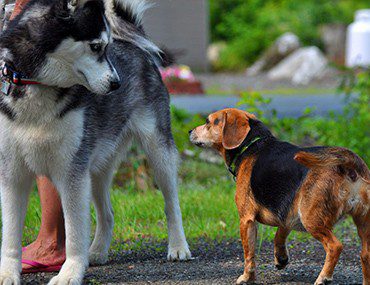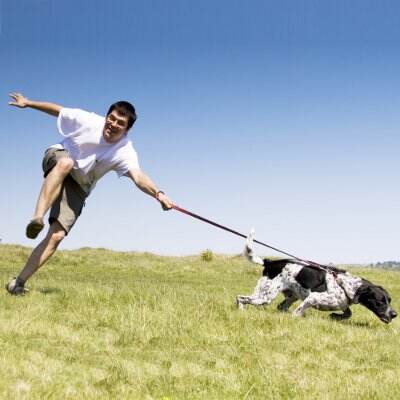
The dog pulls the leash: what to do?
If the dog pulls on the leash, walking turns into torment. As a result, the dog walks a little, the owner is irritated and constantly pulls it, the pet starts to pull even harder … The vicious circle closes. Why does the dog pull on the leash and what to do to wean it?
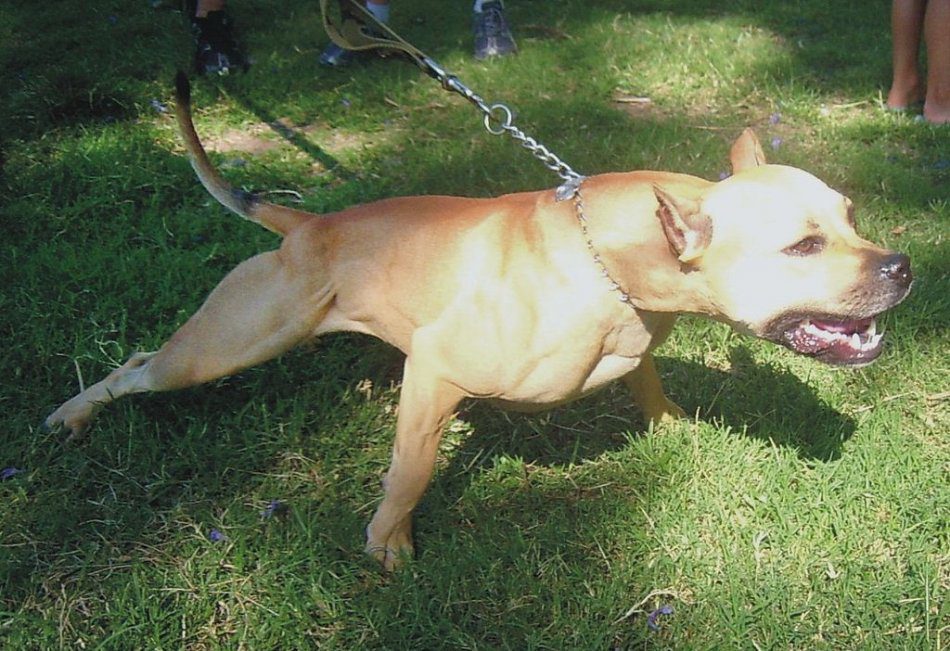

In the photo: the pit bull pulls the leash. Photo: wikimedia.org
Why does the dog pull on the leash?
To find a solution to any behavioral problem, you must first find the cause and eliminate it. There are several reasons why a dog pulls on a leash:
- Involuntary Learning, that is, reinforcement of such behavior. The dog pulls the owner, and he follows her. So the pet learns to pull the leash to get what he wants. And why give up this habit, if everything works out? Your four-legged friend is simply unaware that the person on the other end of the leash is uncomfortable!
- jerking leash. It may sound paradoxical, but the advice of some dog handlers to jerk the leash to wean the dog from pulling has the opposite effect – the dog begins to pull even harder! The fact is that before a jerk, a person loosens the leash, and then pulls hard, causing pain to the dog or, in any case, tangible discomfort. And the pet creates an association that the loosening of the leash will be followed by pain, which means that in no case should the leash be allowed to sag.
- dog overstimulation. You have probably met dogs that are constantly torn on a leash in all directions, barking, unable to concentrate. This is a sign of overexcitation. And here, first of all, it is necessary to work with the state of the dog – to teach him to relax and “keep himself in his paws.” And then engage in a tight leash.
- Using a tape measure. If you use a tape measure at least occasionally, you are teaching your dog to pull on the leash. The very principle of roulette: to get where you want, you need to constantly pull, teaches the dog to pull on the leash. In addition, having got used to the fact that the tape measure creates a constant tension, the dog simply perceives it as the norm.
- Insufficient training. The dog was simply not explained that pulling on the leash is bad.
What to do if the dog pulls on the leash?
There are rules by following which you can teach your dog to walk on a loose leash.
- If it is a matter of overexcitation, as already noted, you need teach your dog to relax and “keep yourself in the paws.” To do this, you can use relaxation protocols, reduce stress, increase predictability by adjusting the daily routine and creating useful rituals.
- Stop reinforcing the tension on the leash. If the dog pulls on the leash, stop and wait. Do not pull on the leash, do not scold the dog. As soon as the dog turns to look at you (and sooner or later he will do this in order to understand why you suddenly turned into a pillar of salt), encourage him and keep moving. You can also stop, turn around and move in the opposite direction when the leash is pulled. So the dog will understand that the scheme “pulled the leash and hit the right place” no longer works, but another one works: “if you don’t pull the leash, you will get to the desired place faster.”
- Use the same length of leash. So the dog will roughly understand how far away from you he can go. This will make the learning process faster and easier.
- Don’t use a tape measure. At all. Even occasionally. Otherwise, you will return to your original positions over and over again.
- Do not scold the dog. If you reprimand the dog and advance on him, he will naturally try to stay away from you in order to avoid a burst of your aggression. And will pull the leash.
- Reward Good Behavior. Is your dog walking on a loose leash? Excellent! Praise and treat her. The more you encourage the desired behavior, the more often it occurs.
- change direction. So the dog will learn to follow you, and not move along the route laid once and for all, not paying attention to what is happening on the other end of the leash.
- Start simple. Let the first lessons take place in places where the dog will not be distracted by friends, running cats, cars or cyclists. The difficulty level increases gradually, as does the duration of the workouts.
- Get in a good mood. If you are irritated or upset, it is very difficult not to take out negative emotions on the dog. And in this case, she will not learn anything good.
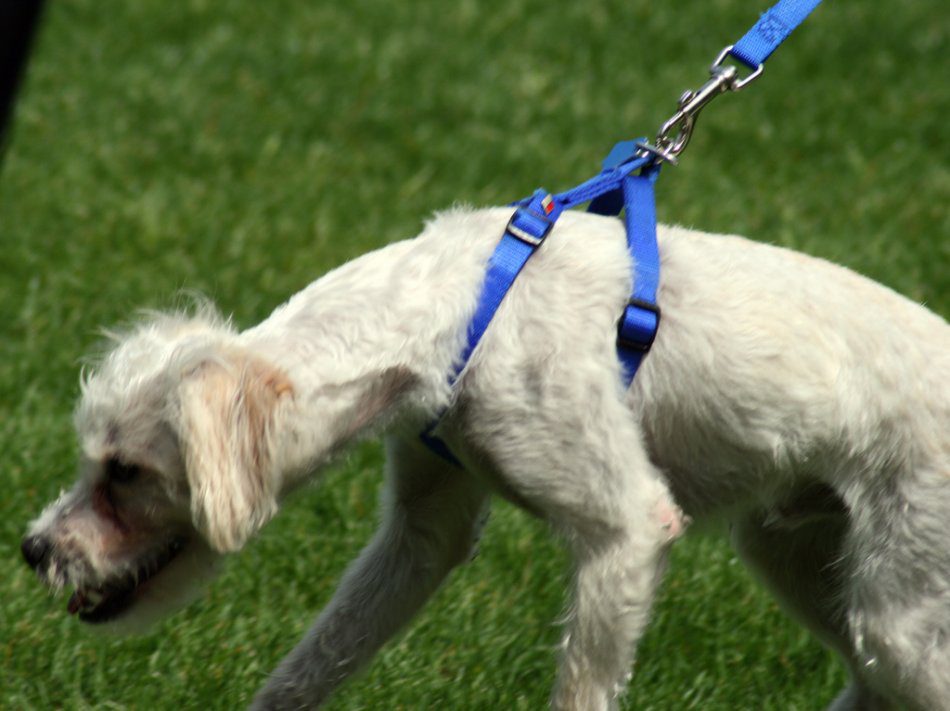



In the photo: the dog pulls the leash. Photo: flickr.com
Some owners believe that it is impossible to train an adult dog not to pull on a leash. However, this is a misconception: a dog is able to learn at any age.






